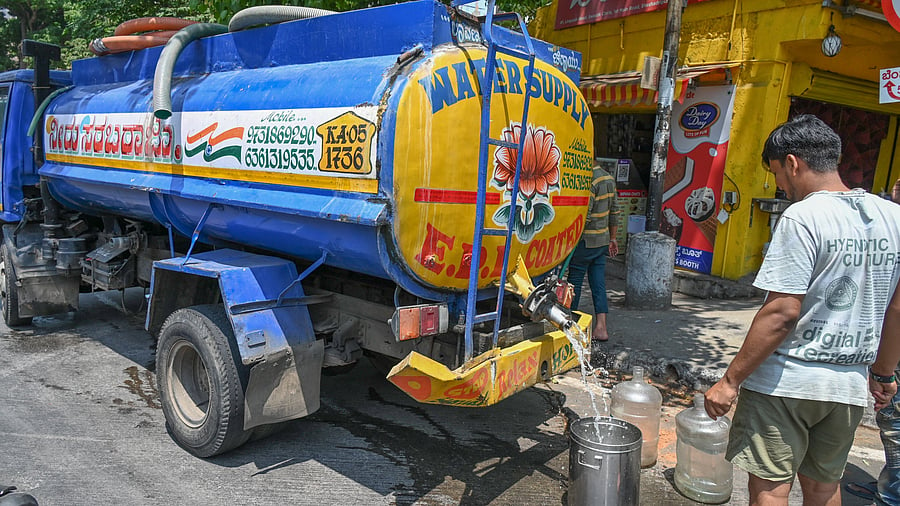
A man collects drinking water from a tanker in VV Giri Colony on Saturday.
Credit: DH Photo/ S K Dinesh
Bengaluru: The Bangalore Water Supply and Sewerage Board (BWSSB) may soon recommend to the state government a few changes to the building bye-laws to ensure individual water meters are compulsory for all houses in the newly constructed apartment complexes.
Individual water meters help determine the water consumption by every household thus bringing in accountability. This will eventually help bring down water consumption.
BWSSB Chairman Ramprasath Manohar V said that he is awaiting a formal request from the Bangalore Apartments’ Federation (BAF) and will soon send out recommendations to the government.
In May 2020, the BWSSB, through a government gazette notification included Regulation 43-A to the BWSSB Water Supply Regulations, 1965. According to the rule, it was suggested that all existing buildings with three or more houses in an area of over 2,400 sq ft and upcoming buildings with three or more houses in an area of over 1,200 sq ft implement sub-metering systems.
Apartment complexes that have installed the sub metering system have recorded close to 30% reduction in water consumption, sources said.
Cut-off box - BWSSB to collect data BWSSB has also asked the apartment associations to submit the details of their water consumption along with a break up of how the water is sourced. The apartments will have to give data on how much Cauvery water they consume their dependency on borewells and quantity of water sourced through tankers. The data Manohar said could help determine the minimum quantity of water required by these apartments and the BWSSB could try to supply this minimum quantity.
Cut-off box - ‘Green star rating’ challenge for apartments BWSSB on Saturday launched the ‘green star rating’ challenge for apartment complexes to encourage limited use of water and prevent any misuse. The apartment complexes will have to implement five suggestions that the BWSSB has come up with to be eligible for the rating. The five suggestions to abide by to get the green star rating are: practicing various methods to bring down water consumption; increasing the use of treated water; use of technology in maintenance and drilling of borewells; construction of rainwater harvesting pits; and creating awareness among the residents.
